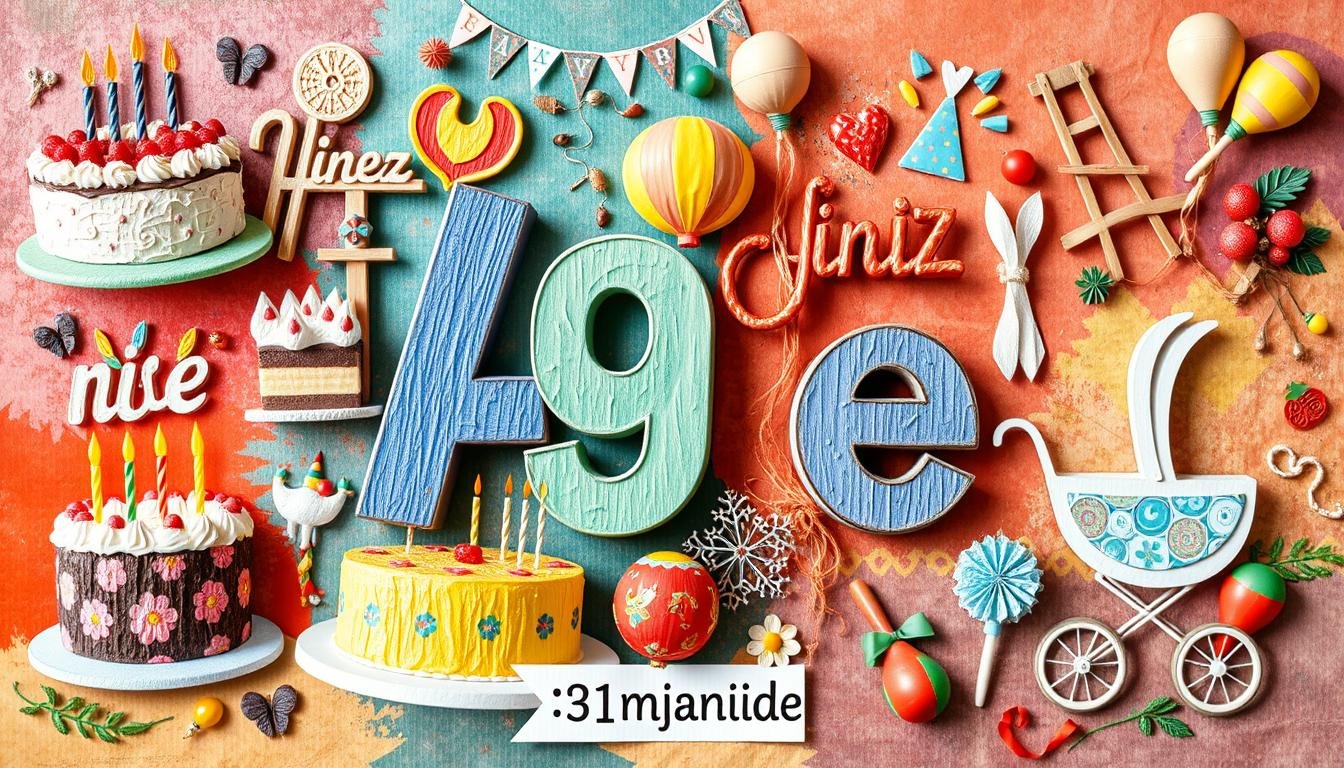A vibrant Spanish street scene depicts various age groups enjoying life together, showcasing cultural elements such as traditional music, colorful clothing, and lively interactions. The scene includes elderly people sharing stories with children, young adults dancing, and middle-aged couples engaging in conversation over tapas at outdoor cafes, all set against a backdrop of historic architecture and blooming flowers.
Age is vital in Spanish culture. It shapes social interactions and personal identity.
Spanish culture sees age as wisdom. Each year brings more profound insights and social standing.
Edad affects family and work relationships. It guides how people interact and see themselves.
This guide explores age in Spanish-speaking societies. We’ll look at how Edad impacts connections and traditions.
We’ll uncover Spanish views on personal growth. And we’ll explore relationships between generations.
Get ready to see Edad beyond numbers. You’ll gain a new perspective on age and culture.
The Significance of “Edad” in Spanish Culture
Age shapes social interactions in Spanish-speaking societies. Edad is more than a number. It’s a system of respect and social hierarchy.
Cultural respect is rooted in age-based customs. Elders are seen as wisdom keepers, and their opinions matter in family and community decisions.
Young people revere older generations. This practice strengthens social bonds and keeps traditional values alive.
Spanish family structures centre on intergenerational connections. Grandparents often live with their children and grandchildren, creating a close-knit family environment.
Age determines roles and responsibilities in families. Older family members remain important in daily life, receive care, and maintain their dignity.
Edad can influence career paths and marriage traditions. Younger people often ask older relatives for guidance. They seek approval for important life decisions.
Age-based customs create a unique social framework. Experience and collective wisdom are highly valued. Understanding edad helps outsiders appreciate Spanish-speaking cultures.
Edad reveals a social system based on life experience. It shows how personal growth is respected in these societies.
How Age Affects Personal Identity
Age shapes personal identity in Spanish culture. The edad identity reflects cultural expectations and age-based roles that guide experiences.
Young adults in Spain face complex expectations about careers and family. Cultural norms set milestones for education, marriage, and career growth.
These age-based roles influence personal choices and self-image. They create a framework for young adults to follow.
Middle-aged people face challenges in keeping their sense of self. Work, family, and social status become key markers of worth.
They must balance personal dreams with cultural expectations. This balance requires careful thought and action.
Older generations are highly respected in Spanish culture. Their edad identity brings wisdom and authority to the family.
Younger family members often seek advice from elders. This practice strengthens age-based social structures.
Personal identity changes as we age. Each life stage brings new views and chances to learn.
Understanding these cultural details helps people grow. It allows them to respect traditions while finding their path.
Celebrating Birthdays: A Cultural Event
Spanish birthday traditions are vibrant celebrations. They mark critical edad milestones throughout a person’s life.
These gatherings reflect deep cultural significance. They go beyond simple annual events.
The quinceañera is a memorable age milestone in Hispanic culture. At 15, it marks a girl’s transition to womanhood.
Families invest in creating a memorable event. It symbolizes personal growth and cultural identity.
Different edad celebrations show unique regional variations. Mexican parties often have colourful decorations and traditional music.
The cake-cutting ritual is central. Guests sing “Las Mañanitas,” the Spanish “Happy Birthday” song.
Some communities focus on collective celebrations. These bring extended families together.
These gatherings strengthen social bonds. They recognize age milestones as important community events.
Each region has its distinct approach. The core of Spanish birthday traditions remains consistent.
They celebrate life and personal growth. They also honour familial connections through meaningful edad celebrations.
Age and Language: Understanding “Edad”
A colourful collage representing various aspects of age in Spanish culture, featuring symbolic elements like traditional birthday cakes, a vibrant piñata, age-related objects like a rocking chair and a baby stroller, and festive decorations. Include abstract representations of numbers and age expressions in Spanish, such as “niñez,” “adolescence,” and “tercera edad,” intertwined with cultural motifs like flamenco dancers and maracas, all against a rich background inspired by Spanish artistic styles.
Spanish edad vocabulary is more than just numbers. It shows deep cultural meanings in age-related words.
The word “edad” means more than a simple age. Spanish learners find that talking about age needs respect and care.
Age talk in Spanish shows great respect for older people. Young folks often use polite words with elders.
Words like “usted” (formal “you”) show respect to older people. This shows how important age is in Spanish culture.
Learning about edad needs more than just books. Spanish speakers use age words to show respect and closeness.
Knowing edad words helps you connect better with Spanish speakers. It’s about feeling, not just saying the right words.
Comparing Age Across Cultures
Age perceptions vary greatly across cultures, offering insights into social dynamics. In Spanish-speaking communities, edad (age) is highly respected and significant.
Cultural differences show up in how societies view ageing and identity. Spanish cultures often celebrate ageing as gaining wisdom and social standing.
Elderly individuals are highly respected in these communities. Younger generations stay close to older family members and value their guidance.
American culture focuses on youth and personal achievement. Spanish-speaking cultures view age as part of social structures.
Age in these cultures reflects values of community and family ties. This approach shows how edad means more than just numbers.
Cross-cultural comparisons reveal age as a complex social construct. Understanding these differences helps people appreciate diverse views on human growth.
Each culture brings unique insights into the ageing process. Researchers explore ideas across cultures, uncovering rich social understandings.
The Impact of Age on Work and Career
Age significantly affects professional growth in Spanish-speaking work settings. An individual’s education can create unique challenges and opportunities in their career path.
Workplace dynamics can be tricky. Age discrimination is a big problem for many professionals.
Older workers often face roadblocks when moving up. Many companies have hidden biases against experienced professionals.
Age discrimination shows up in hiring, promotions, and training chances.
Spanish-speaking cultures value professional experience highly. Seasoned pros bring deep knowledge that younger coworkers might not have.
We must understand how education affects careers. This helps create fair work environments.
Career strategies must change as workplaces evolve. Pros can beat age barriers by learning new skills.
Keeping professional networks strong and being flexible also helps. Embracing tech and staying current fights age discrimination.
Employers gain from seeing strengths in all age groups. Diverse teams with both experience and new ideas work best.
Fair hiring and growth practices ensure talent shines, no matter the industry.
Aging and Health in Spanish Culture
Spanish culture views ageing in a unique way. It honours the wisdom and experience of older people.
Older adults are highly respected in Spanish families. They often stay involved in family life and decisions.
Spanish families usually care for their elderly at home. Grandparents often help with childcare in these homes.
Ageing well is a fundamental part of Spanish life. Good food, friends, and mental health are essential.
The Mediterranean diet helps people live longer. It includes fresh foods and olive oil.
Doctors know seniors need care for body and mind. Community centres offer help to keep seniors healthy.
These programs help older people stay independent. They also provide support when needed.
Spanish culture shows that ageing is about growing. Valuing seniors creates a caring environment for them.
Resources for Exploring “Edad”
Exploring edad resources requires thoughtful research. Libraries, databases, and Spanish education platforms offer excellent materials.
The Library of Congress has lots of age-related research. Stanford’s Hispanic Studies department also has helpful collections.
Digital platforms make learning about education in Hispanic societies easy. JSTOR and Google Scholar have articles on ageing views.
ResearchGate shares studies about age in Spanish-speaking communities. Madrid and Berkeley’s schools often publish new edad research.
Cultural groups offer hands-on educational resources. The Hispanic Society of America has workshops and archives.
The National Hispanic Cultural Center runs research programs. These give deep insights into age-related social structures.
Online webinars and virtual talks can add to your research. These help you learn more about edad.
Networks are key for expanding education knowledge. LinkedIn connects you with Spanish culture experts.
Academic forums share new research on age dynamics. They also tell you about upcoming conferences on Hispanic cultures.
FAQ
What does “dead” mean in Spanish?
“Edad” is Spanish for “age.” It’s more than a number in Spanish-speaking cultures.
It reflects social status, respect, and personal identity. These aspects are essential in Hispanic communities.
How important is age in Spanish culture?
Age is significant in Spanish culture. It shapes social interactions, family dynamics, and relationships.
Older people are highly respected. Age often determines social status and expectations.
At what age are major life milestones celebrated in Spanish cultures?
The quinceañera at 15 is a key celebration. It marks a girl’s move from childhood to young womanhood.
Ages 18 and 21 are also important. They’re often celebrated with special events.
How do Spanish speakers typically discuss age?
Spanish speakers are direct about age. They often ask about it in social settings.
Age is used to show respect and understand social context.
Does age affect professional opportunities in Spanish-speaking countries?
Many Spanish-speaking cultures value experience and wisdom. These often come with age.
Younger generations are pushing for more inclusive hiring practices. They’re challenging traditional age-based workplace barriers.
How do Spanish cultures view ageing and elderly care?
Aging is viewed with respect. Families usually care for elderly relatives.
Multi-generational households are ordinary. There’s a strong focus on supporting older family members.
Are age-related customs the same across all Spanish-speaking countries?
Age-related customs can vary between Spanish-speaking countries and regions. Each culture has its way of viewing age.
How does language reflect age in Spanish-speaking cultures?
Spanish has specific ways to show respect based on age. This includes formal and informal addresses (tú vs usted).
There are also unique verbal forms. These show respect to older people.
What are some unique age-related traditions in Spanish cultures?
The quinceañera is a unique tradition. Big family gatherings for birthdays are everyday, too.
There are also special coming-of-age celebrations. Birthday parties often involve entire extended families.
How do younger generations view age traditions in Spanish cultures today?
Younger generations respect traditional age-related customs. They’re blending these with more modern, global views.
They’re updating age-related traditions. This helps fit today’s social dynamics while keeping core cultural values.
you may also read : Converting Days to Months: Easy Time Calculation Guide



